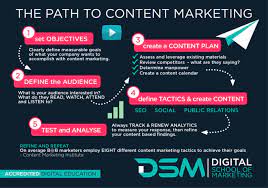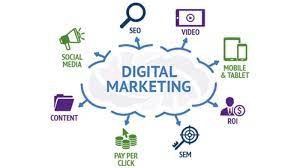The Role of Content Marketing Companies in Today’s Digital Landscape
In the ever-evolving world of digital marketing, content has emerged as a powerful tool for businesses to connect with their target audience, build brand awareness, and drive engagement. Content marketing companies play a crucial role in helping businesses create and distribute valuable, relevant, and consistent content to attract and retain customers.
What Do Content Marketing Companies Do?
Content marketing companies specialise in developing strategic content plans tailored to meet the unique needs and goals of their clients. These companies employ a team of skilled writers, editors, designers, and strategists who work together to create compelling content across various platforms such as websites, social media, blogs, email campaigns, and more.
The Benefits of Working with a Content Marketing Company
Collaborating with a content marketing company offers several advantages for businesses looking to enhance their online presence:
- Expertise: Content marketing companies have the knowledge and experience to craft high-quality content that resonates with your target audience.
- Consistency: By outsourcing your content creation needs to professionals, you can ensure a consistent flow of engaging content across all channels.
- SEO Benefits: Well-crafted content can improve your search engine rankings and drive organic traffic to your website.
- Data-Driven Strategies: Content marketing companies use data analytics to measure the performance of your content and make informed decisions for future campaigns.
- Saves Time and Resources: Partnering with a content marketing company allows you to focus on other aspects of your business while experts handle your content strategy.
In Conclusion
Content marketing companies play a vital role in helping businesses navigate the complex world of digital marketing. By leveraging their expertise and resources, businesses can create compelling content that drives engagement, builds brand loyalty, and ultimately leads to increased conversions. If you’re looking to take your digital marketing efforts to the next level, partnering with a reputable content marketing company could be the key to unlocking success in today’s competitive landscape.
Top 6 Essential Tips for Effective Content Marketing Strategies
- Understand your target audience to create relevant and engaging content.
- Consistently produce high-quality content to establish credibility and trust.
- Utilize various content formats such as blogs, videos, infographics, etc., to cater to different preferences.
- Optimize content for SEO to improve visibility and attract organic traffic.
- Promote your content across different channels like social media, email newsletters, etc., to reach a wider audience.
- Invest in analytics tools to track the performance of your content and make data-driven decisions for improvement.
Understand your target audience to create relevant and engaging content.
To effectively leverage the services of content marketing companies, it is essential for businesses to have a deep understanding of their target audience. By gaining insights into the preferences, needs, and behaviours of their audience, businesses can create content that is not only relevant but also engaging. Tailoring content to resonate with the specific interests of the target demographic can significantly enhance the effectiveness of marketing campaigns and foster stronger connections with potential customers. In essence, knowing your audience is key to producing compelling content that drives meaningful engagement and ultimately contributes to the success of your digital marketing efforts.
Consistently produce high-quality content to establish credibility and trust.
Consistently producing high-quality content is a fundamental tip for content marketing companies aiming to establish credibility and trust with their target audience. By delivering valuable and relevant content on a regular basis, businesses can showcase their expertise, build a reputation for reliability, and foster trust among consumers. This approach not only helps in engaging the audience but also sets a strong foundation for long-term relationships with customers, ultimately leading to increased brand loyalty and conversions.
Utilize various content formats such as blogs, videos, infographics, etc., to cater to different preferences.
To maximise the effectiveness of your content marketing strategy, it is essential to utilise a diverse range of content formats, including blogs, videos, infographics, and more. By offering content in various formats, businesses can cater to the diverse preferences of their target audience. Some individuals may prefer reading in-depth blog articles, while others might engage more with visual content like videos and infographics. By incorporating different formats into your content strategy, you can increase engagement, reach a wider audience, and enhance the overall impact of your marketing efforts.
Optimize content for SEO to improve visibility and attract organic traffic.
To enhance visibility and attract organic traffic, it is essential for content marketing companies to optimise their content for search engine optimisation (SEO). By incorporating relevant keywords, meta tags, and high-quality backlinks, companies can improve their search engine rankings and make their content more discoverable to potential audiences. This strategic approach not only increases organic traffic to the website but also enhances the overall effectiveness of the content marketing efforts in reaching and engaging with the target audience.
Promote your content across different channels like social media, email newsletters, etc., to reach a wider audience.
To maximise the impact of your content marketing efforts, it is essential to promote your content across various channels such as social media, email newsletters, and more. By diversifying your distribution strategy, you can effectively reach a broader audience and increase the visibility of your brand. Engaging with users on different platforms allows you to connect with potential customers where they are most active, driving traffic to your website and enhancing brand awareness. Implementing a multi-channel promotion approach is key to expanding your reach and achieving greater success in today’s competitive digital landscape.
Invest in analytics tools to track the performance of your content and make data-driven decisions for improvement.
Investing in analytics tools is essential for content marketing companies to track the performance of their content effectively. By leveraging data-driven insights, businesses can gain valuable information about audience engagement, conversion rates, and overall content effectiveness. This allows companies to make informed decisions for improvement, refine their content strategies, and optimise future campaigns for better results. Analytics tools provide valuable metrics that help content marketers understand what resonates with their audience and tailor their content to meet their needs more effectively.



